Inside the quiet neighborhood where residents are living on the edge amid fears giant sinkholes will swallow their homes after they made a shocking discovery
More than 150 people are involved in a lawsuit against the state of South Dakota over a series of sinkholes that opened in 2020.
The lawsuit, filed by Hideaway Hills residents, accuses the state of acting recklessly by failing to properly stabilize a piece of land once used as a state-operated mine.
They accuse the state of selling the land despite knowing it was above the old site, and knowing the natural ability of the soil to support the surface was in question.
Today, there are over a hundred homes near the depressions, and new depressions are still being built every day.
If the lawsuit is successful, authorities will have to pay out the value of each affected home, totaling about $44 million.
Scroll down for the video:
More than 150 people are involved in a lawsuit against the state of South Dakota over a series of sinkholes the state accidentally opened in 2020
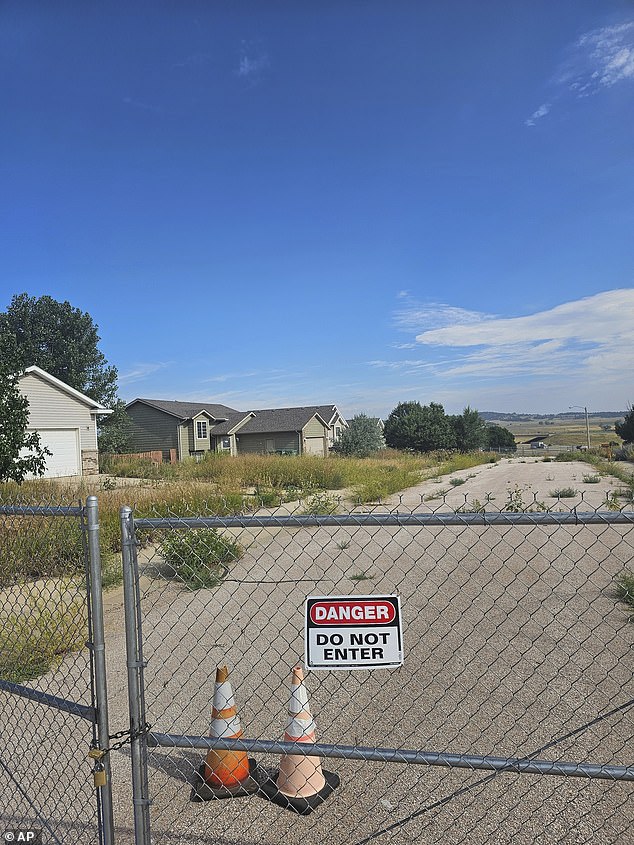
The lawsuit, filed by Hideaway Hills residents, accuses the state of reckless failure to properly stabilize a tract of land that had been used as a state-operated mine, seen here.
“They’re worried about school buses falling into a hole,” attorney Kathy Barrow said Saturday, more than four years after several of her clients’ homes were evacuated after the first sinkhole collapsed and spilled into the abandoned gypsum mine.
They are afraid that their house will collapse on their children in their beds at night.
“I mean, you spend your whole life investing money and building equity in your home,” she continued, as the class action lawsuit continues to move through state courts.
“It’s your most valuable asset, and these people’s assets have become not just worthless, but almost negative, because it’s dangerous to live in.”
Days earlier, a judge in South Dakota had granted class-action certificates to the 158 homeowners Barrow represents, whose homes were rendered worthless after a sinkhole opened in Black Hawk’s Hideaway Hills neighborhood in May 2020.
This means that homeowners who do not opt out of the scheme will be jointly represented in court by Fox Rothschild, the firm that is bringing the case on behalf of the homeowners.
The area’s mining history dates back to the 1900s and the site was abandoned before 1930.
From 1986 onwards, a state-owned cement factory operated on this site for many years. Around 1994, a horse farmer bought the land, who later sold it to a project developer. State research revealed a deep hole in it.
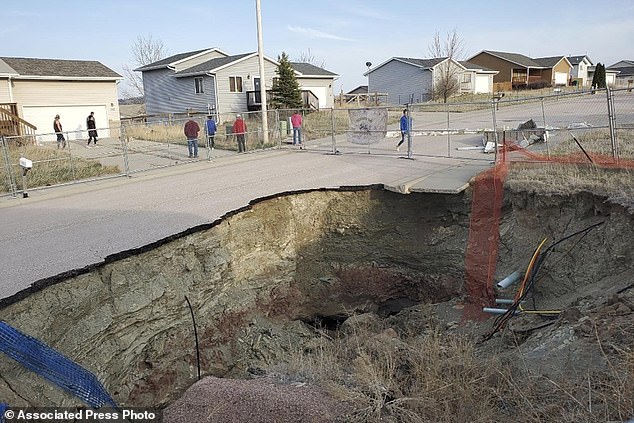
This photo taken on April 27, 2022, shows a sinkhole in the Hideaway Hills neighborhood near Rapid City
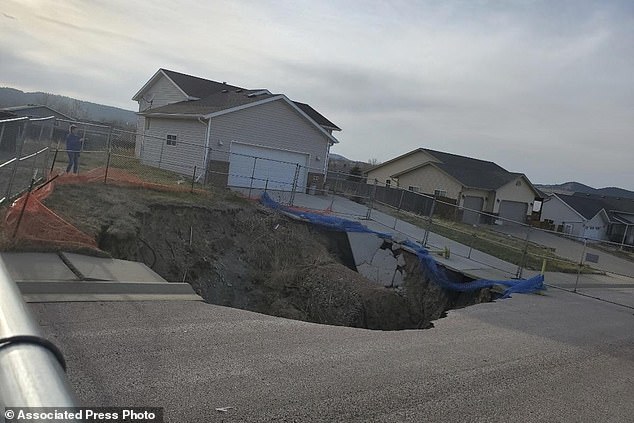
Another photo by Tonya Junker shows the same sinkhole, which was created in 2020 as a result of work near an old mining site
The state has since claimed that it was not liable for the damages because the cement factory was not mining underground and the mine, in their view, would have collapsed anyway.
The state said they could not have known that developers, homebuilders and the county would eventually build on the site, despite knowing about the past mining and underground areas.
The land became available in May when a man was mowing his lawn in the affected neighborhood, prompting residents like Carisa Gerving and Caitlin Samuel to reach out to Barrow.
Testing revealed the large, unsealed mine, already known to the public, beneath the northeastern part of the district.
A 40-foot-deep mine was also found in another corner of the neighborhood, Barrow said, adding that government officials had failed to report such developments.
“To the extent that there is improper or inadequate remediation — which is certainly one of the things we allege — that can only be attributed to the state,” she told Black Hill’s Fox affiliate in June.
Plaintiffs Tonya Junker and Stuart Junker also blame the state. Tonya told the AP that her husband was supposed to retire this year but now he has to keep working to save money in case they have to be evacuated.
“That’s a bitter pill to swallow,” she said, referring to the ever-present concern expressed by several people in the lawsuit.
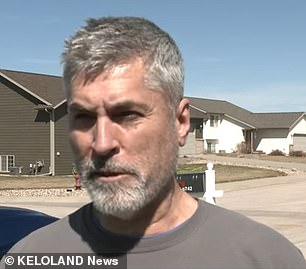
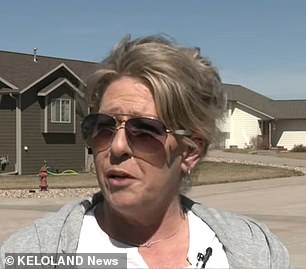
Plaintiffs Stuart and Tonya Junker also blame the state, with Tonya telling the AP how her husband was supposed to retire this year but now has to continue working to save money in case they have to be evacuated.
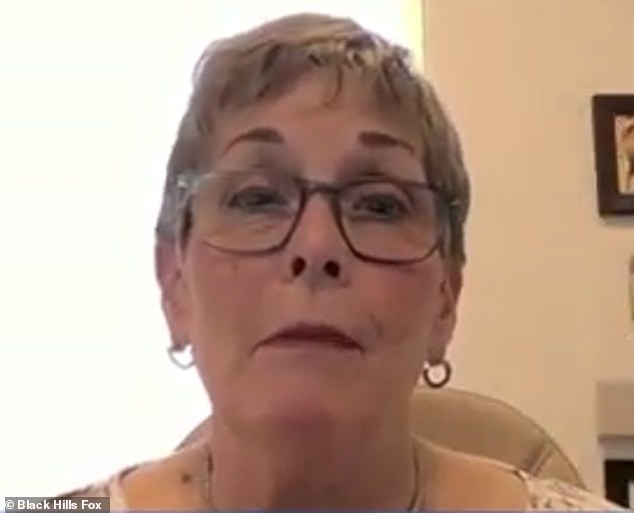
Attorney Kathy Barrow
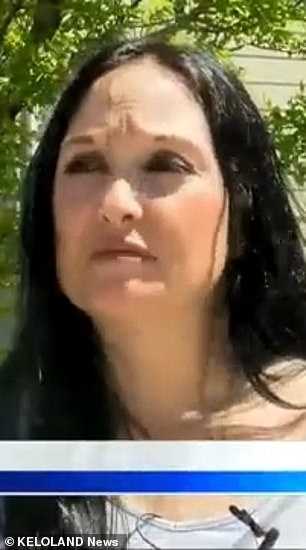
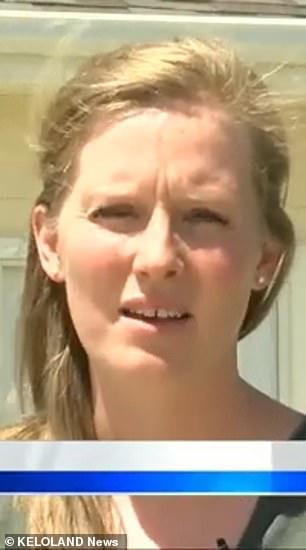
The land was released in May when a man was mowing his lawn in the neighborhood that was affected, prompting residents like Carisa Gerving and Caitlin Samuel to contact Barrow
They have lived there for 15 years, in a house that was built in 1929. That was the first time that houses were built in the neighborhood that, according to the state, should never have been lived in.
They gutted and renovated the building and planned to make the three-bedroom, two-bathroom home their retirement base, but now all they want to do is to get paid what his house is worth.
“It’s just disappointing that the state won’t take care of us,” Stuart said ahead of the compensation trial set to take place next spring.
“I mean, this is their problem.”
However, the state continues to maintain that it was not the fault of the officials, but of the developers and sellers who built the area wrongly and at their own risk over the years.
“Those who are truly liable in this case are the developer, the original realtor, and the many homebuilders who knowingly chose to build on an abandoned mine and purposefully concealed its existence from the homebuyers who purchased homes in Hideaway Hills,” the state said in a statement.
But since that first major collapse, holes and subsidence continue to appear.
At the time of writing, there are still “too many to count,” Barrow said.
